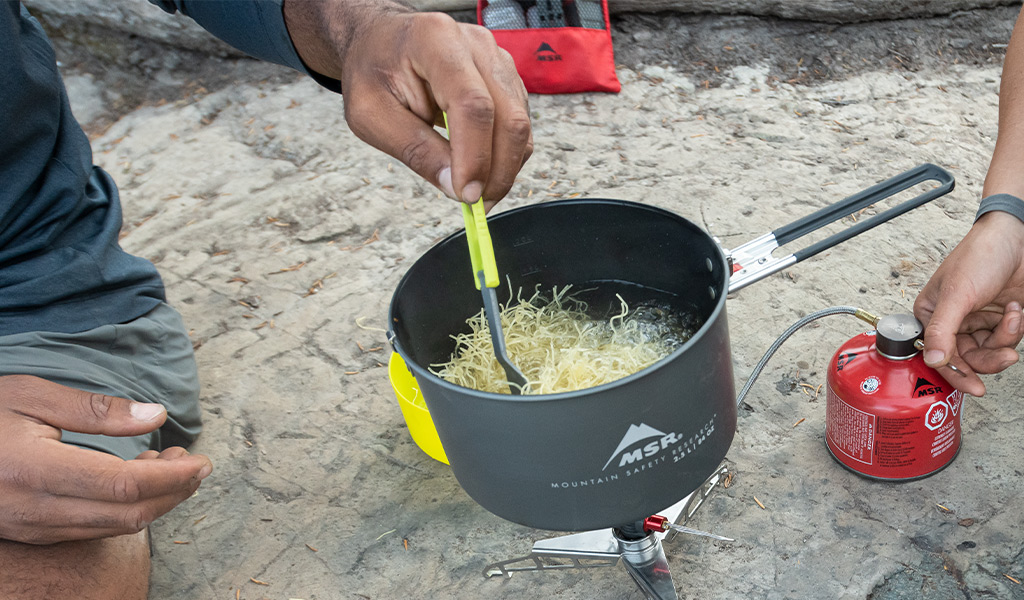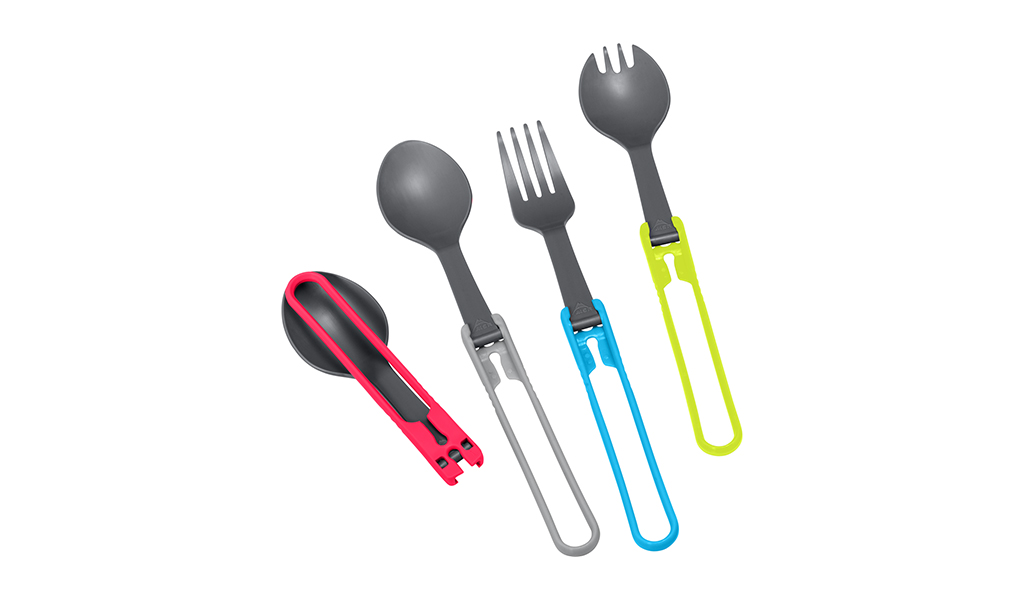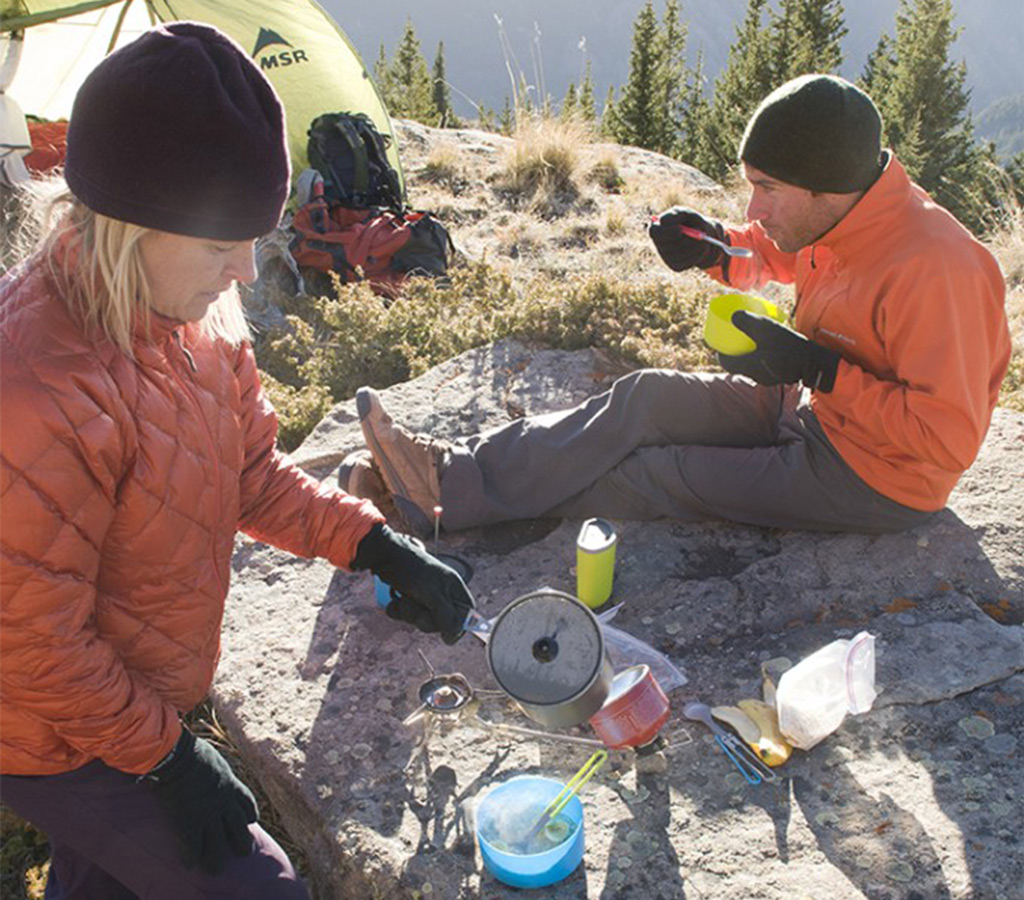MSR Folding Utensils – Behind the Gear
Even eating utensils require quality engineering. Product Manager Steve Grind answers a few questions about the design and performance of MSR’s Folding Utensils, designed for maximum packability and food-to-mouth efficiency. We know what’s important when you’re camping.

What is the advantage of a folding spoon, fork or spork?
Folding utensils are popular because they collapse into a much smaller configuration for packing, and often provide an overall longer utensil that is more suitable for use with pouch-cook meals. And utensil length is important if you’re a freeze-dried food aficionado, assuming you’d prefer not to spend your after-dinner time cleaning stroganoff from your knuckles. Some people prefer rigid utensils for their simplicity and ease of cleaning—and there are some good, long, single-piece utensils available. I tend to take folding utensils on most trips, though, since I can pack each color-coded utensil inside its matching mug, thereby keeping the kitchen kit more organized and easier to use.
MSR folding utensils are designed with a clever squeeze-to-release mechanism that locks securely and easily unlocks with a simple squeeze, even with gloved hands. Be wary of any folding mechanism with tiny latches that may require the dexterity of a watchmaker to lock or unlock. Those tend to break easily and are far more difficult to use, and there’s nothing worse than watching your food get cold while you fiddle with your fork!
Can you explain the term “median pouch meal depth”?
They come in all shapes and sizes—short, tall, wide and narrow. We’re talking of course about the variety of sizes among freeze-dried meal pouches from brands such as Mountain House, Backpacker’s Pantry, AlpineAire, etc. Pouches can be as short as 5 inches and as tall as 12 inches or more, and the deeper they are, the harder it is to extricate those last few bites of supper. That’s why our utensils are longer than average, and why you might think twice about buying that nifty-looking combo utensil that is an inch-and-a-half shorter.

What led you to choose the materials used in the Folding Utensils?
Unless you’re going with metal, you’ll want to make sure you’re getting a high-quality, food-grade nylon utensil for both strength and heat resistance (other plastics will break easier and will melt at a much lower temperature). Our folding utensils are made of nylon 66—a stronger grade of nylon—and incorporate glass reinforcement particles to nearly double their strength.
How do these materials stack up against traditional spoons made of stainless steel?
Stainless utensils are heavier and more durable, while plastic utensils are safer to use on your non-stick cookware, lighter weight, and generally less expensive. Whatever you get, just make sure it is long enough to be useful for the type of cooking and eating you do.
Where are the Folding Utensils manufactured?
We manufacture our folding utensils at our own factory in Ireland.

Do you prefer the spoon, the fork, or are you a spork guy?
I’m a spoon guy through and through. I understand the draw of the spork but for most of the meals I make while camping, a spoon does the trick (I often have a soup appetizer, so a spork doesn’t do quite as well). The exception for me is any time I plan to make spaghetti—these are the times I reach for a fork, and often bring that in addition to a spoon. Interestingly, we sell roughly the same number of sporks as we do spoons or forks. Sporks are slightly more popular, but not by a wide margin.
Updated. Originally Published June 21, 2013.
